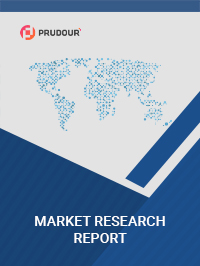
The Report named “Global Automotive Wheel Bearing Market” serves crucial perceptions into global Automotive Wheel Bearing industry along with newfangled industry details, currently dominating players in Automotive Wheel Bearing, chapter wise analysis of each section and looming industry trends, which will guide the readers to target Automotive Wheel Bearing market product Specifications and clients driving the long-term market revenue and profitability.
This report mainly focuses on Automotive Wheel Bearing industry in the global market. This report primarily covers Automotive Wheel Bearing market in North America, Automotive Wheel Bearing market in Europe, Automotive Wheel Bearing market in Middle East and Africa, Automotive Wheel Bearing Market in Latin America and Asia Pacific. This report segregates the Automotive Wheel Bearing market based on Type, Competitive Players, Regions and Application.
SKF
Schaeffler
NTN
NSK
ILJIN
JTEKT
Wanxiang
Nachi-Fujikoshi
GKN
Hubei New Torch
TIMKEN
GMB Corporation
Harbin Bearing
FKG Bearing
CU Group
Wafangdian Bearing
PFI
Xiangyang Automobile Bearing
Xiangyang Xinghuo
Shaoguan Southeast
Changzhou Guangyang
Changjiang Bearing
Gen.1
Gen.2
Gen.3
Passenger Vehicle
Commercial Vehicle
Automotive Wheel Bearing Market: Regional/Counties Analysis
The market is spread across the globe which not only includes Automotive Wheel Bearing market in Europe (Germany, France, Italy, Russia and UK), Automotive Wheel Bearing market in North America (Canada, USA and Mexico) but also Automotive Wheel Bearing market in Asia-Pacific(China, India, Korea and Japan). Now Automotive Wheel Bearing industry is also spread in Middle East and Africa (Saudi Arabia, UAE, Egypt, Nigeria and South Africa)and Rest of the World. Use of advanced technology is constraining the Automotive Wheel Bearing global market in North America. Europe will show a enormous elevation in the growth of global for Automotive Wheel Bearing industry due to increased use of Automotive Wheel Bearing in various fields. Asia Pacific countries such as China and India will show a enormous growth in the Automotive Wheel Bearing global market due to rise in job opportunities.
Global Automotive Wheel Bearing market report also includes Automotive Wheel Bearing Market Business Overview. It also includes Automotive Wheel Bearing Market by Applications and Type, Automotive Wheel Bearing Revenue, Sales and Price and Automotive Wheel Bearing Business Share. This report of Automotive Wheel Bearing Market research also consists Global Automotive Wheel Bearing Market Competition, by Automotive Wheel Bearing market revenue of regions, sales and by Automotive Wheel Bearing industry Competative Players, (2015-2020).
Report on (2021 Automotive Wheel Bearing Market Report) mainly covers 15 Section and keenly display’s the global Automotive Wheel Bearing market:
Chapter 1 describes Automotive Wheel Bearing Introduction, product scope, Automotive Wheel Bearing market overview, market opportunities, market driving force, market risk;
Chapter 2 analyzes the top competitive players of global Automotive Wheel Bearing, with revenue, Automotive Wheel Bearing industry sales, and price of Automotive Wheel Bearing, in 2019 and 2020;
Chapter 3 displays the competitive situation of Automotive Wheel Bearing among the top competitive players, with sales, revenue and market share in Automotive Wheel Bearing Market in 2018 and 2019;
Chapter 4 shows the global Automotive Wheel Bearing market by regions, with market sales, revenue and share of Automotive Wheel Bearing, for each region, from 2016 to 2020;
Chapter 5, 6, 7, 8 and 9 analyzes the key regions, with revenue, sales, and market share of Automotive Wheel Bearing market by key countries in these regions;
Chapter 10 and 11 shows the worldwide Automotive Wheel Bearing market by type and application, with sales channel, Automotive Wheel Bearing market share and growth rate by type, Automotive Wheel Bearing industry application, from 2016 to 2020;
Chapter 12 includes global Automotive Wheel Bearing market forecast, by regions, type and application, Automotive Wheel Bearing with sales and revenue, from 2021 to 2031;
Chapter 13, 14 and 15 describes Automotive Wheel Bearing distributors, dealers, Automotive Wheel Bearing traders, sales channel, research findings and conclusion, appendix and data source.
Do Inquiry Before Accessing Report Here https://market.us/report/automotive-wheel-bearing-market/#inquiry